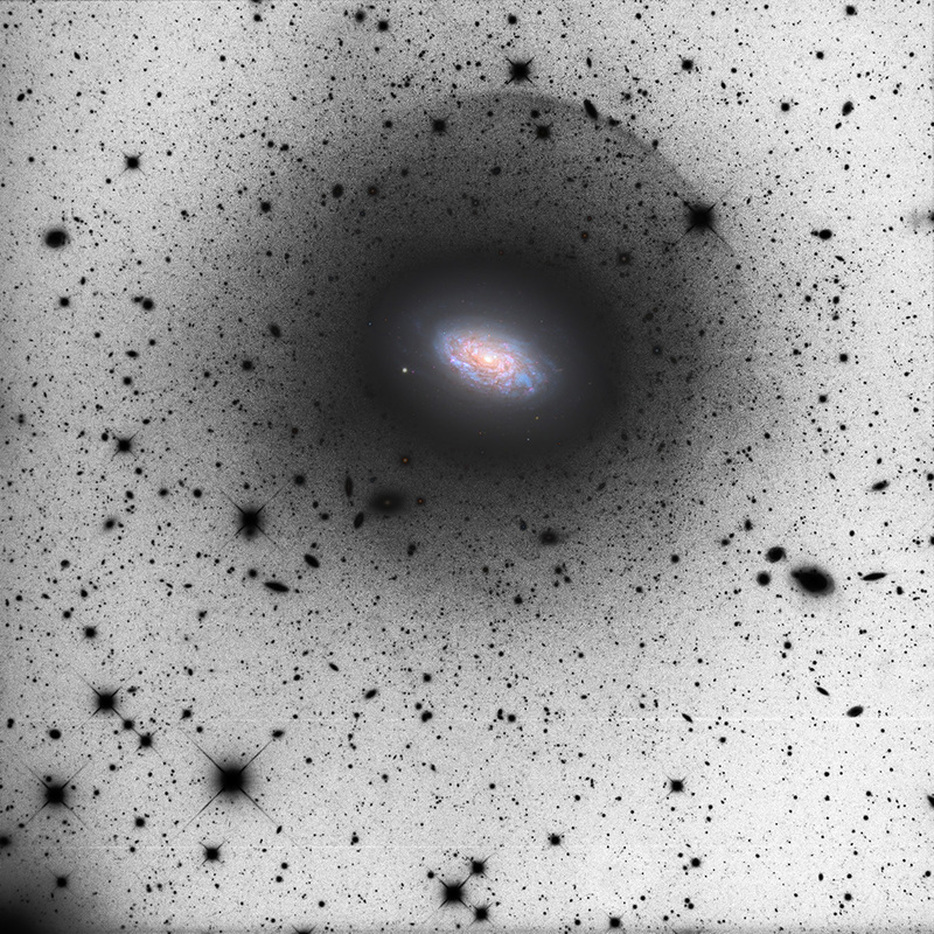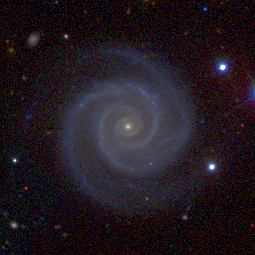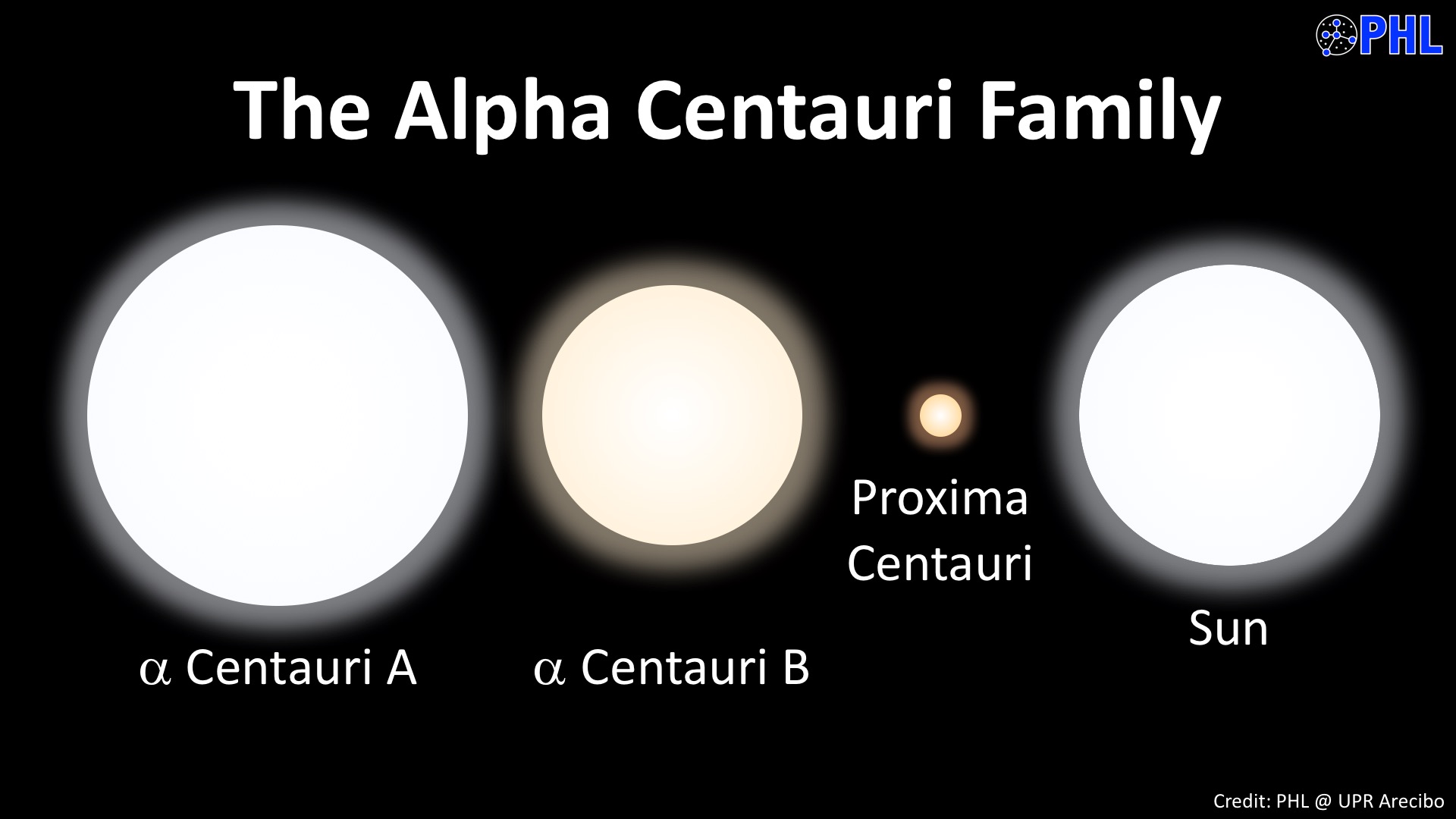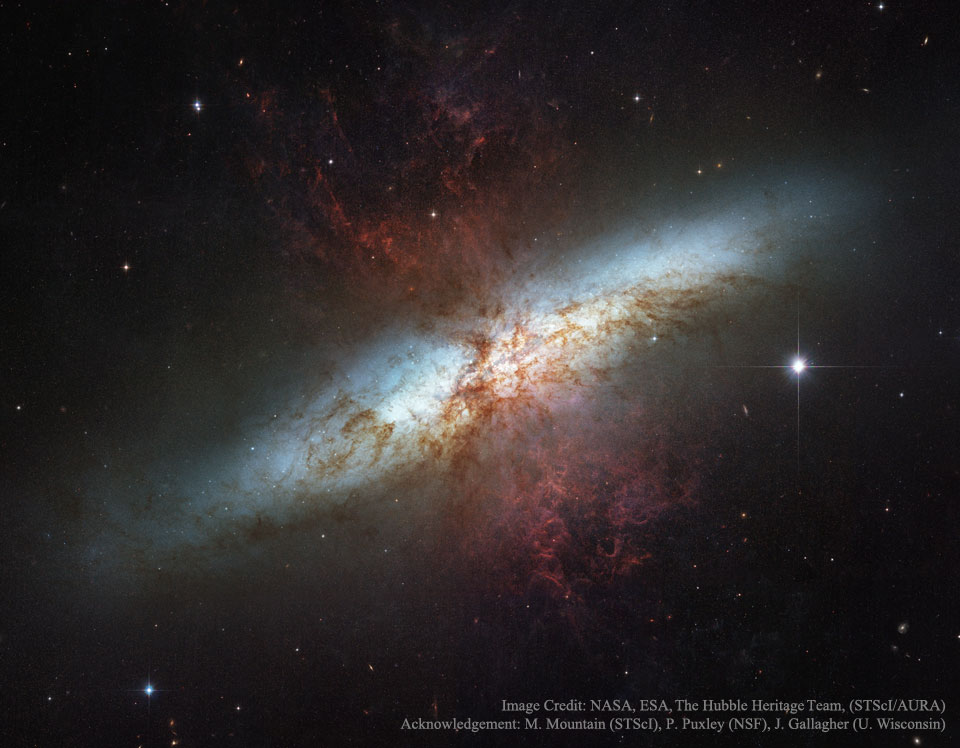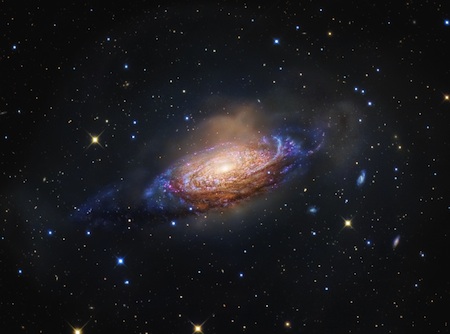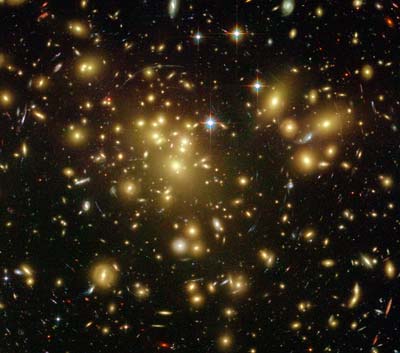[c]Alpha Centauri A, Alpha Centauri B, Proxima Centauri, and the Sun.[/c] Elliptical galaxies are "dim" in the sense that their stellar population is predominantly made up of old, low-mass and therefore very dim stars. Many of their stars are similar to the star (apart from the Sun) that is currently closest to us, Proxima Centauri. Proxima Centauri, by the way, is a member of the three-star Alpha Centauri system.
Jim Kaler wrote about Proxima Centauri:
As a mid-class M (M5.5) dwarf star, Proxima is faint indeed, to the eye
18,000 times dimmer than the Sun. (...) When infrared radiation produced by its 3040 Kelvin surface is accounted for, it is seen to be more luminous, but still only 1/600 as bright as the Sun (and 15 percent the size), the result of
a mass only 12 percent solar.
So the mass of Proxima Centauri is 0.12 solar, but its luminosity is 0.00018 solar. My software, Guide, actually claims that the luminosity of Proxima Centauri is only 0.000055 solar. I'm not here to argue about decimals. The point is that Proxima Centauri is not just light-weight and small, but extremely faint for its light-weight mass and small size. This is typical of very low-mass stars.
Giant elliptical galaxy M87.
Consider giant elliptical galaxy M87. Is it faint? No, my software claims that M87 is four times brighter than the Milky Way. But while it is a luminous galaxy, it is first and foremost a massive galaxy. According to
Wikipedia, the total mass of M87 may be 200 times the mass of the Milky Way. So while M87 is a bright galaxy, no question about it, you can nevertheless say that it is faint, or even dim, for its mass.
The Sun and a modest-sized red giant star.
M87 is made up almost exclusively of old stars, and old stars are typically dim. Yes, some old stars are bright, particularly red giant stars. At left you can see a comparison between the Sun and a (very) modest red giant star. At best, the red giant in this picture is comparable to Pollux, whose radius is 9 times that of the Sun. Many if not most red giants are bigger, and some are very, very much bigger, but most of the biggest red giants are young stars. And there are virtually no young stars and therefore no super-sized red giants in typical elliptical galaxies.
So the kind of stars that you are likely to find in M87 are main-sequence stars like the Sun, very low-mass stars like Proxima Centauri, and modest red giants like Pollux and (considerably brighter) Arcturus. (Of course you are also likely to find huge numbers of main sequence stars that are fainter and smaller than the Sun, but bigger and brighter than Proxima Centauri.)
M51, the Whirlpool Galaxy.
Photo: Luis Romero.
Let's compare M87 with spiral galaxy M51. According to
Wikipedia, M51 is only about 35% the size of the Milky Way. Its mass is estimated to be only 160 billion solar masses, compared with 2,400 solar masses for M87. (A
new estimate of the mass of the Milky Way claims that the mass of our own galaxy is between 600 and 750 billion solar masses.) So the mass of M51 is about 7% of the mass of M87, and 21-27% the mass of the Milky Way. Yet even though M51 is small and light-weight, it is quite bright, about 1.4 times brighter than the Milky Way, according to my software.

NGC 3293, a young cluster of massive bright stars.
Photo: ESO/G. Beccari.
Why is M51 bright? It is bright because it contains a lot of bright stars, and it contains a lot of bright stars because it keeps forming new stars all the time. Some of those new stars are very massive, and massive stars are very bright. Most of the massive bright stars shine with a blue light, which explains the bluish color of M51. There are not nearly as many massive young stars in the Milky Way as there are in M51, but a Milky Way example of massive stars is the bright members of cluster NGC 3293. The individual stars may be up to ~30 times as massive as the Sun, but they are thousands of times brighter. But massive stars die young, and a galaxy that contains many bright stars must keep on forming a lot of new stars (or, at the very least, it must have formed a lot of new stars very recently). The large number of bright pink emission nebulas in M51 suggests that this galaxy keeps forming new stars very vigorously.
Finally, why is the gaseous spiral in the core of Centaurus A hidden from us? It is hidden from us because there is a wall of stars in front of it, since the center of Cen A is crammed with stars. Yes, most of these stars are dim in themselves, but there are tremendous numbers of them, and there are even huge numbers of bright red giant stars near the center of Cen A. We are staring at a lot of
suns and trying to see a (probably) not-so-bright gaseous spiral hidden among them. No wonder we can't see it!
Ann
 M89: Elliptical Galaxy with Outer Shells and Plumes
M89: Elliptical Galaxy with Outer Shells and Plumes
